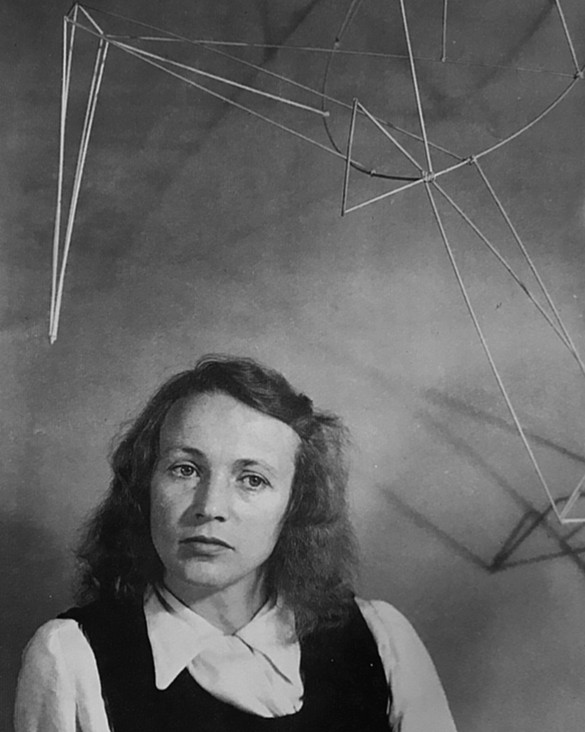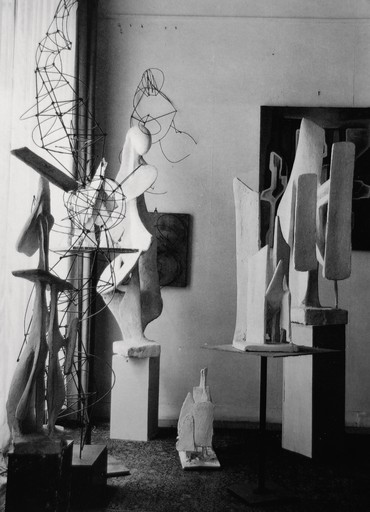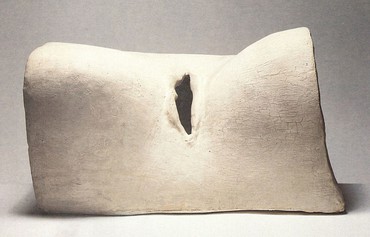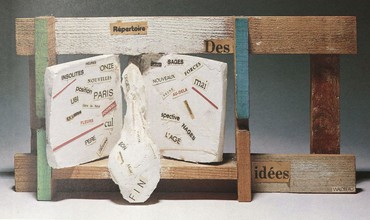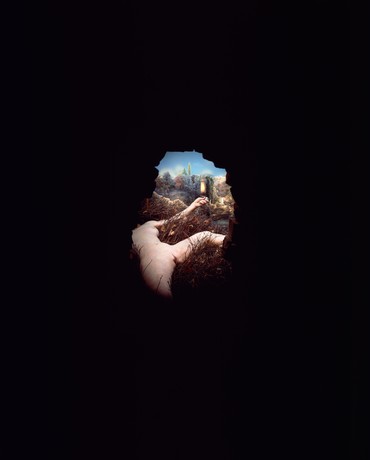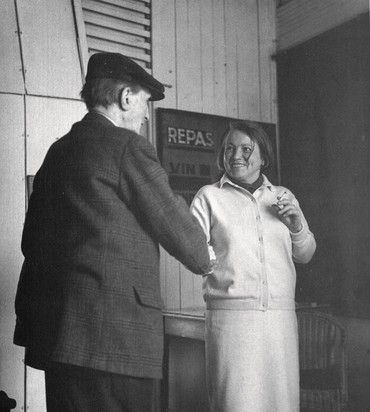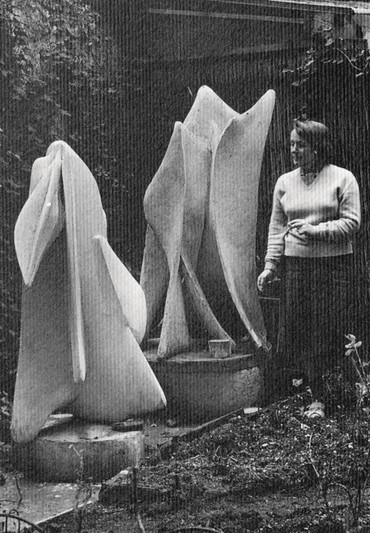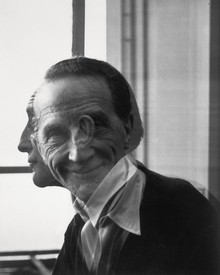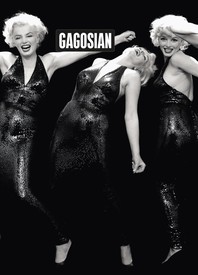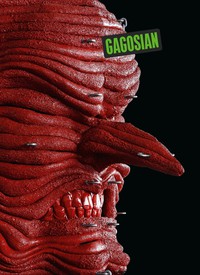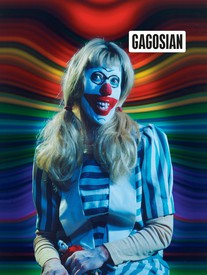
Jacquelynn Baas is a cultural historian, writer, curator, and director emeritus of the University of California, Berkeley Art Museum and Pacific Film Archive. Her books include Buddha Mind in Contemporary Art (2004), Smile of the Buddha: Eastern Philosophy and Western Art from Monet to Today (2005), and most recently Marcel Duchamp and the Art of Life (2019).
In April 1957 the protean artist Marcel Duchamp delivered his manifesto “The Creative Act” to the American Federation of Arts in Houston, Texas. His conclusion:
The creative act is not performed by the artist alone; the spectator brings the work in contact with the external world by deciphering and interpreting its inner qualification and thus adds his contribution to the creative act. This becomes even more obvious when posterity gives a final verdict and sometimes rehabilitates forgotten artists.1
Duchamp’s final words imply that each generation brings new ways of seeing to the perception and evaluation of art and artists. Duchamp was always involved in the art of his time, but the phrase “rehabilitating forgotten artists” suggests he may have intended to close his address with a word of encouragement to his artist friends.
One of the closest of these was Isabelle Waldberg. Born Margaretha Isabella Maria Farner in the canton of Zurich in German Switzerland in 1911, Waldberg came from a long line of blacksmiths, but her father, as the younger son, could not inherit the family forge and was relegated to farming. Waldberg loved spending time at her uncle’s forge, and it is tempting to attribute her future career as a sculptor to her family history. In 1932 she moved to Zurich, where she studied sculpture and immersed herself in the city’s art scene.
In 1936, Waldberg relocated to Paris, where she got to know a number of artists including her compatriot Alberto Giacometti, who would be an artistic influence on her. At that point in her life, she was a free spirit who derived an income from the sale of her erotic drawings and small sculptures. In 1937 she met the American writer and political activist Patrick Waldberg at Café Dôme. They quickly became romantically involved, and Patrick convinced her to use the name Isabelle (his estranged wife was named Margareta). Patrick was associated with the writer and political subversive Georges Bataille, and together he and Isabelle became core members of Bataille’s secret society, Acéphale. When Bataille’s partner Colette Peignot, known as Laure, died of tuberculosis in November 1938, Isabelle and Patrick moved in with him at Saint-Germain-en-Laye, near Marly Forest—site of Acéphale’s secret sacrificial and sexual rituals, in which Isabelle appears to have played a central role.2
With the onset of World War II, Acéphale unraveled and Patrick volunteered to serve in the French infantry. In August 1940 he was awarded the Croix de Guerre and demobilized. As an American citizen, Patrick preceded Isabelle to the United States, where he lived for a while in New York and then traveled through California and the West. With considerable difficulty, Isabelle finally managed to come to New York with their young son, Michel, in July 1942, one month after Duchamp’s return to the city. The little family moved into an apartment at 18 East 57th Street, one floor above Duchamp’s friend and future biographer Robert Lebel and his family. Isabelle and Patrick married in September 1942, just before he departed for London, where he had been assigned by the American Office of War Information (sponsor of Voice of America, where Patrick found employment for artist friends including André Breton). Patrick subsequently moved between London, North Africa, and Paris while Isabelle remained in New York, seeing him only briefly on the rare occasions when he could get leave. Meanwhile, Isabelle developed a romantic and intellectual relationship with Lebel that would last until Lebel’s death, in 1986.
Isabelle Waldberg quickly immersed herself in New York’s artistic and intellectual life. In a hardware store, she discovered flexible birch dowels that she could soak in water, bend, and fasten together with string along the lines of Giacometti’s spare Palace at 4 A.M. (1932), which had deeply impressed her when she saw it in his Paris studio in 1936. She was encouraged to pursue her new “dematerialized” sculpture by Breton and Lebel, who early in 1944 published a book of erotic poetry, Masque à lame, featuring photographs of Waldberg’s “constructions,” as she called them.3 The title Masque à lame translates into English as “Blade mask.” Lebel’s son Jean-Jacques plausibly suggests that his father’s title is a pun on masque à l’âme—“mask for the soul”—in other words, the body.4
“I loved my life in New York,” Waldberg recalled in 1963. “In Paris I had studied ethnology at the Sorbonne and I became friends with André Breton and Marcel Duchamp. Marcel seemed kind to everyone, but he didn’t really like people that much. Of course, he had very good friends, but he only liked a few people. He didn’t talk much; he wasn’t like the other Surrealists.”5 There is little doubt that Waldberg was one of the young women who occupied the bed of the charismatic “Inventor of Free Time,” as Lebel portrayed Duchamp in a contemporaneous story.6 Although it is hard to know how close she had been to Duchamp in Paris, in New York Waldberg was clearly one of Marcel’s few “very good friends.” “He liked young women,” she wrote. “Marcel came to my studio often, and sometimes we would have dinner. . . . He had one simple room on West 14th Street. When I returned to Paris after four years, Marcel let me take over his small seventh-floor studio in rue Larrey.”7 Their professional collaboration was as strong as their personal relationship. Waldberg worked with Duchamp on both of the bookstore windows he created for Breton in 1945—in April for Breton’s autobiographical book-length essay Arcane 17, and the following November for an expanded edition of Le Surréalisme et la peinture. A central feature of this second window was one of the bent-wood sculptures Waldberg had been making over the previous two years. Reversed, the pose of her now-lost 1943 Construction, which Lebel had paired with his poem “Toujours là bel aqueduc” (Always there, beautiful aqueduct) in Masque à lame, is identical—right down to the absence of a head—to the pose of the figure that Duchamp would adopt in Étant donnés: 1. La chute d’eau, 2. Le gaz d’éclairage (Given: 1. The Waterfall, 2. The Illuminating Gas, 1946–66).8
Everyone but Patrick returned to Paris after the war. Duchamp would begin working on Étant donnés in 1946, a year in which Waldberg created an even more startling precedent. Luminaire is a plaster sculpture that appears to have been cast from a female pudendum, perhaps as a “how-to” exercise for the plaster-cast female body in Étant donnés.9 It is the obverse of Duchamp’s plaster-cast Female Fig Leaf (1950), which was reproduced on the cover of Le Surréalisme, même in 1956. Duchamp had carefully lit his little sculpture and then retouched the photograph, transforming it into the shadowy image of a vulva. Notably, the vulva in Luminaire is a hole, like the hole at the center of the figure in Étant donnés. Waldberg’s title—Luminaire (Light)—evokes the lamp held up by Duchamp’s figure. Luminaire was unlike anything else Waldberg was doing at the time; she tended to work in series, and this bleak plaster sculpture makes little sense except in the context of Étant donnés.
In January 1947 Duchamp would return to New York and his lover Maria Martins, who is usually considered the inspiration for Étant donnés. In terms of Duchamp’s emotional involvement with Martins, that is not wrong; but in terms of artistic inspiration, Waldberg would appear to have been the more important source. When he left for New York, Duchamp invited Waldberg to move into his Paris studio. Twenty years later, shortly after finishing Étant donnés, he wrote a pithy paean to her: Isabelle sculpte, ausculte, s’occulte et exulte—“Isabelle sculpts, sounds, occults, and exults.”10 His tribute reveals not only Duchamp’s affection but also his deep respect for Waldberg’s talent, perception, discretion, and spirit.
Waldberg played a number of roles over the course of her life, including translator (Nietzsche, for Bataille) and writer/editor (the Encyclopaedia Da Costa, for Duchamp and Lebel). But it is as a sculptor that she deserves—to use Duchamp’s term—rehabilitation. Fascinated as a child by the form-creating construction in timber and plaster of a house near the family farm, Waldberg primarily worked in wood and malleable plaster, casting in bronze to achieve more permanent form. Despite her scholarly interest in ethnology and Native American culture, and her friendship with Breton, she did not think of herself as a Surrealist. Her participation in the window displays for Breton’s books, and her friendships with artists such as Giacometti, Max Ernst, André Masson, and Matta suggest that she was a consummate networker. She was also generous: when Peggy Guggenheim offered her a solo exhibition at Guggenheim’s Art of This Century Gallery, in 1944, Waldberg responded by inviting the Latvian expressionist painter Rudolf Ray to show with her.
Returning to Paris after the war, Waldberg wrote her husband, still in New York, asking him to bring a supply of birch dowels from a hardware store “at or near the corner of 60th Street and 3rd Avenue.”11 Duchamp showed her airy sculpture La nue, or Premier du fil (The nude/cloud, or First thread) in his “Rain Room” at the 1947 Paris Exposition Internationale du Surréalisme. In 1948, Waldberg began to reinterpret her wood constructions in iron and then returned to plaster, with its infinite possibilities of form. Drawings and paintings on paper constituted yet another aspect of her ongoing oeuvre, which would come to encompass bronze, pigmented plaster and wood, cork, and other materials.
As a sculptor, Waldberg explored the eroticism engendered by the polarity between figuration and abstraction. Occasional intimations of violence betray her formation as an artist between two catastrophic wars. Her dual emphasis on emergence and dissolution, protection and openness, conveys not a Cartesian dualism between spirit and matter, but a yin-yang morphology inspired by Asian and Native American perspectives on reality. Waldberg’s fundamental focus was on le masque à l’âme: the connection between physical form and consciousness. A philosopher might call it panpsychism: the view that mind is omnipresent within tangible reality.
Duchamp would have simply called it art. Pierre Larousse, whose “abstract” words he mined, defined art as application des connaissances à la réalisation d’une conception—application of knowledge to the realization of a conception.12 For Waldberg, sculpting was both an act of conception and an art of love: “a sculpture is held close,” she wrote, “we are in dialogue, it becomes the other.” She experienced this polarity with “eyes wide open to the light of day; for it must be full day or illuminated night to absorb infinitely all the lights available outside of time.”13 Difficult to translate from the original French, her words suggest that Luminaire was intended (among other things) as a portal to infinite enlightenment.
In addition to the citations below, see also Robert Lebel, “Isabelle Waldberg: à l’entrée ou à la sortie de son palais de la mémoire,” in Étant donné Marcel Duchamp, no. 7 (2006), pp. 86–107. The Isabelle Waldberg Committee maintains a website: www.isabellewaldberg.com.
1Marcel Duchamp, “The Creative Act,” Artnews 56, no. 4 (Summer 1957), pp. 28–29.
2Due to the secretive nature of the group, precisely what went on during the secret, “inner” meetings of Acéphale remains a subject of conjecture. See Jacquelynn Baas, Marcel Duchamp and the Art of Life (Cambridge, MA: MIT Press, 2019), pp. 229–38.
3Robert Lebel, Masque à lame (New York: Liberal Press/Éditions Hémisphères, “1943” (1944); repr. ed. Geneva: Mamco, 2015). The term “dematerialized sculptures” is from Catalogue sculpteurs (Geneva: Éditions Claude Givaudan, 1966), n.p.
4See Paul Franklin, “Coming of Age with Marcel: An Interview with Jean-Jacques Lebel,” in Étant donné Marcel Duchamp, no. 7 (2006), p. 17.
5Isabelle Waldberg, “Peggy Guggenheim, Marcel Duchamp & André Breton,” in Étant donné Marcel Duchamp, no. 7 (2006), p. 138.
6Published in Robert Lebel, La double vue, suivi de L’inventeur du temps gratuit (Paris: Le Soleil Noir, 1964). See also Baas, Duchamp and the Art of Life, pp. 190ff.
7Waldberg, “Peggy Guggenheim, Marcel Duchamp & André Breton,” p. 138.
8In Étant donnés the head is hidden, with only a shock of blond hair visible. The connection between the pose of Waldberg’s “Endless Aqueduct” and that of the figure in Étant donnés was first noted by Thomas Girst, in “Duchamp’s Window Display for André Breton’s Le Surréalisme et la peinture” in the January 2002 issue of the online journal tout-fait, available at www.toutfait.com/duchamps-window-display-for-andra-bretons-le-surraalisme-et-la-peinture-1945/ (accessed December 29, 2019).
9On Duchamp’s process, see Melissa S. Meighan, “A Technical Discussion of the Figure in Marcel Duchamp’s Étant donnés,” in Michael R. Taylor, Marcel Duchamp: Étant donnés, exh. cat. (Philadelphia: Philadelphia Museum of Art, in association with Yale University Press, 2009), p. 244.
10Reproduced in Étant donné Marcel Duchamp, no. 7 (2006), p. 102. Ausculte refers to listening to the body, as with a stethoscope.
11Patrick and Isabelle Waldberg, Un amour acéphale: correspondance, 1940–1949, ed. Michel Waldberg (Paris: Éditions de la Différence, 1992), p. 432.
12Petit Larousse illustré (Paris: Librairie Larousse, 1912), p. 64. See Baas, Duchamp and the Art of Life, p. 5.
13Isabelle Waldberg, quoted in Michel Waldberg, Isabelle Waldberg (Paris: Éditions de la Différence, 1992), pp. 47–48. The quote reads in French: “les yeux grand ouverts à regarder la clarté du jour; car il doit faire grand jour ou nuit illuminée pour absorber à l’infini toutes les lumières disponibles pendant les temps illimités.”
Essay adapted from Marcel Duchamp and the Art of Life (Cambridge, MA: MIT Press, 2019); images sourced from Michel Waldberg’s Isabelle Waldberg (Paris: Éditions de la Différence, 1992)
